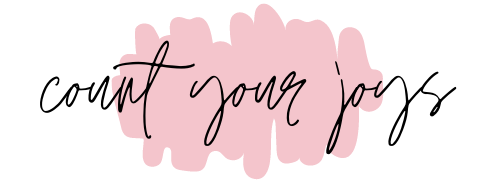To say that I love coffee is an understatement. There are days when I can say that I truly live and breathe coffee. And yet, I’m not what you’d call a huge coffee drinker (I can’t drink more than 2 cups per day). More than the beverage itself, what I love about coffee is the art of learning about the craft, the art, and the science behind it.
I guess this is an occupational hazard. I work in a digital ad/marketing agency and our office is located on the second floor of a cafe in Makati. I do marketing for the café, too. So for several years now, I have been exposed to coffee and I sometimes brew my own coffee when I don’t want to bother our baristas. 😆
It wasn’t always like this though. I didn’t always drink coffee and when I did, it was 3-in-1 coffee. I couldn’t grasp the idea of black coffee. Plus, I had acid reflux and I thought coffee would aggravate it (I later learned that coffee isn’t any more acidic than beer, soda, or fried chicken). But in 2015, I was introduced to cold brew and life has never been the same.
Why cold brew?
It would seem like cold brew is a pretty new concept but it has been around since the 17th century. Kyoto-style brewed coffee (named for its popularity in Kyoto, Japan) is said to be the earliest record of cold brew coffee, dating back to the 1600s.
I love cold brew for its smooth taste and lower levels of acid. Cold brew coffee is made by soaking coffee grounds in cold water for 10 to 24 hours. When you brew using hot water, you quickly extract the flavors, aromas, oils, and acids in the coffee. Brewing with cold water means you extract all the flavors but lesser acids.
Cold brew coffee can be up to 60% less acidic than traditionally brewed coffee. This method also retains much of the coffee’s flavor (which is why it’s easier to detect flavor notes and undertones in cold brew) because without temperature change, there’s no change in coffee’s chemistry. Simply put, a day-old cold brew tastes more flavorful than a hot coffee that has turned cold.
How to make cold brew at home without special equipment
Imagine my horror when the lockdown was enforced. Where will I get my daily cold brew?
Fortunately, cold brew is so easy to make. You don’t need any special equipment — none of those weighing scales, thermometers, or fancy-looking drippers. You can make cold brew at home with just 4 things: ground coffee, a bottle or jar, water, and a filter (paper, cheesecloth, or a fine mesh strainer).
Ideally, you’d want a grinder at home for fresher brews but if you don’t, pre-ground coffee is fine. Cold brewing is actually recommended for old beans and grounds because it can extract more flavor than when brewing hot.
I was lucky to have a new bag of Commune Blend beans when the ECQ started. Commune Blend is a mix of Philippine Arabica and Robusta beans and it’s known for its chocolatey and nutty flavor notes. I got used to not adding sugar to my coffee because of the sweet undertones in Commune’s coffee.
For my first batch of cold brew, I steeped one cup of ground coffee (coarse grind is recommended) in four cups of water for 22 hours on the fridge. I was supposed to steep for only 18 hours but I woke up late the next morning. 😂 I then strained the coffee via a Kalita 102 paper filter and dripper (the ones found in Daiso).

This 1:4 ratio yields a strong concentrate. I used half a cup and added water and ice for every serving (sometimes with milk or Yakult) so this batch lasted for a week. I also poured the brew in ice cube trays to make coffee ice cubes. When I wanted a citrusy twist, I squeezed a bit of lemon juice and added a lemon slice. Thinking of adding mint next time.


Depending on your preference, you can play around with your ratio and brew times. I’ve seen people use 1:8 with longer brew times. You can also follow the 1:16 ratio but drink it as it is and not as concentrate.
You can use a weighing scale but you don’t really have to; a measuring cup will suffice. Some also prefer leaving the coffee at room temperature (which requires a shorter brew time) but I prefer having it cold right away so I take the fridge route. Coffee allows for experimentation, so it’s a great hobby to take on when you have more free time, which is what we all have these days.
I’ve graduated from this method and have now upgraded to a Hario Mizudashi cold brew bottle that eliminates the last step of straining the grounds through a filter. With the Mizudashi, I only have to put the grounds on the nylon mesh brewing chamber, pour water, leave it inside the fridge for 10-14 hours, and then pull the chamber out the next morning. That easy!
Hario recommends using 80 grams of medium-fine ground coffee for a full 1000 ml pot and leaving it for 8 hours but like I said, you can play around with ratios and brew time, and even grind size. I still go for coarse to extra coarse grinds on most days just because I don’t want grinds to go through the mesh.

And that’s it! Cold brewing is a really easy and straightforward way of enjoying iced coffee. And with the eternal summer in this country, it’s a refreshing drink any time of the year.

